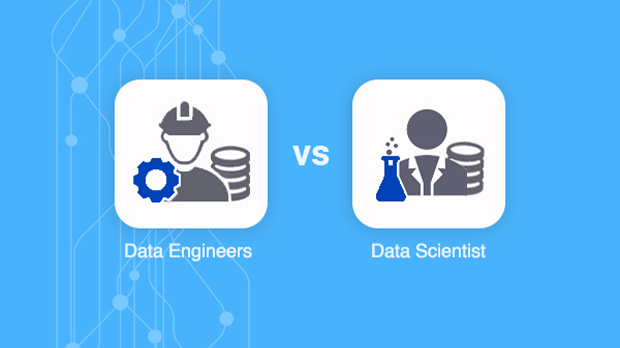In 2020 recent statistics show that about 1.7MB of data is created every second for every person on earth. This kind of data now called Big Data has changed how the whole world operates. Execution of a data science project based on big data seemed like a hard-to-achieve dream a few years ago. Still, today it has been made possible by the heroes from two communities, and they are the data engineers and the data scientists. Both the community members are excellent in their Programming skills, Mathematics, and statistics skills.
Even though they are the two pillars in the success of project execution and they are skilled in many similar skills such as identical programming languages, the scope of the job is pretty defined and restricted to the definition of the function they perform.
The Data science function is the ability to draw meaning from raw data to bring hidden insights and add value to business processes from the raw data using statistical models.
Her expertise is needed in Mathematics, Statistics, Computer Science, and thorough domain knowledge.
The Data Engineering function is the ability to set up the backend end-to-end architecture from identifying the data sources to mapping and taking the data through the data pipeline until it is loaded in the target in a formatted way for data science to use it in its function. For Engineering mainly programming, an in-depth understanding of hardware and middleware is a mandate, but data engineers do scale up on machine learning and statistics to be able to communicate efficiently with their data science counterparts.
A Day in the Life of a Data Engineer
Profile
Data engineers create the process stack for collecting or generating, storing, enriching, and processing data in real-time or in batches and serve the data via middleware for further analysis by other disciplines.
Data engineering usually employs tools and programming languages to build APIs for large-scale data processing and query optimization. Specialists who deal with data engineering are also known as Big Data Engineers or Big Data Architects.
Data engineers are mostly working with tools such as SAP, Oracle, Cassandra, MySQL, Redis, Riak, PostgreSQL, MongoDB, neo4j, Hive, and Sqoop.
Skills
- Data Pipeline building along with ETL.
- Managing and Maintaining Data warehouses.
- Business Intelligence
- Articulate and Logical mind
- Mapping of what data to extract.
- Management and organizational skills.
- Working with cross-functional teams.
Responsibilities
Develop, Build, Test, and Maintain Architectures.
Work Outcome
Data Pipeline, Storage, and maintenance system
Tasks
- Design the big data infrastructure and prepare it to be analyzed.
- Build complex queries to create “pipelines”.
- Arrange any problems in the programmed system.
Use Case
Using actual invoices data forecasting demand plans for the next 12 or 24 months.
A Day in the Life of a Data Scientist
Profile
Data scientists will make use of languages such as SPSS, R, Python, SAS, Stata and Julia to build models. The most popular tools here are, without a doubt, Python and R.
Skills
- Data analysis.
- Mathematics and Statistics.
- Programming.
- Machine Learning.
- Data Mining.
- Good communication skills.
- Good analysis.
- Good hypothesis.
- Broad knowledge in different techniques in machine learning, data mining, statistics, and big data infrastructures.
- Be a problem solver.
Responsibilities
Cleanse, Massage, Organize, Analyze using descriptive statistics and perform analysis to develop insights, build models and solve business needs.
Work outcome
Data Model output representation in different visualizations.
Tasks
- Data Scientists work on clean data.
- Find solutions with the data made available.
- Analyze and communicate with the team.
- Work on a model to execute solutions to problem statements from a business.
Use Case
Mapping and setting up daily integration with footfall sensor database to extract and load daily footprint data.













